An Engineered Protein-Based Building Block (Albumin Methacryloyl) for Fabrication of a 3D In Vitro Cryogel Model
- PMID: 35877489
- PMCID: PMC9324498
- DOI: 10.3390/gels8070404
An Engineered Protein-Based Building Block (Albumin Methacryloyl) for Fabrication of a 3D In Vitro Cryogel Model
Abstract
Drug-induced liver injury (DILI) is a leading cause of attrition in drug development or withdrawal; current animal experiments and traditional 2D cell culture systems fail to precisely predict the liver toxicity of drug candidates. Hence, there is an urgent need for an alternative in vitro model that can mimic the liver microenvironments and accurately detect human-specific drug hepatotoxicity. Here, for the first time we propose the fabrication of an albumin methacryloyl cryogel platform inspired by the liver's microarchitecture via emulating the mechanical properties and extracellular matrix (ECM) cues of liver. Engineered crosslinkable albumin methacryloyl is used as a protein-based building block for fabrication of albumin cryogel in vitro models that can have potential applications in 3D cell culture and drug screening. In this work, protein modification, cryogelation, and liver ECM coating were employed to engineer highly porous three-dimensional cryogels with high interconnectivity, liver-like stiffness, and liver ECM as artificial liver constructs. The resulting albumin-based cryogel in vitro model provided improved cell-cell and cell-material interactions and consequently displayed excellent liver functional gene expression, being conducive to detection of fialuridine (FIAU) hepatotoxicity.
Keywords: 3D in vitro models; albumin methacryloyl; cryogels; liver tissue engineering.
Conflict of interest statement
The authors declare no conflict of interest.
Figures


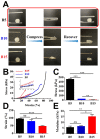
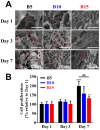
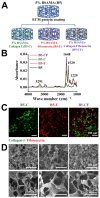
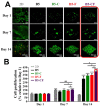
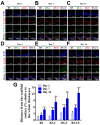
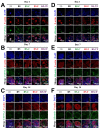


Similar articles
-
Human serum albumin-based cryogels as a biomimetic platform for 3D co-culture and drug-induced liver injury prediction.Int J Biol Macromol. 2025 Sep;321(Pt 2):146376. doi: 10.1016/j.ijbiomac.2025.146376. Epub 2025 Jul 28. Int J Biol Macromol. 2025. PMID: 40738447
-
Combined Effect of Cryogel Matrix and Temperature-Reversible Soluble-Insoluble Polymer for the Development of in Vitro Human Liver Tissue.ACS Appl Mater Interfaces. 2016 Jan 13;8(1):264-77. doi: 10.1021/acsami.5b08607. Epub 2015 Dec 23. ACS Appl Mater Interfaces. 2016. PMID: 26654271
-
Development of gelatin/ascorbic acid cryogels for potential use in corneal stromal tissue engineering.Acta Biomater. 2018 Jan;65:123-136. doi: 10.1016/j.actbio.2017.11.018. Epub 2017 Nov 8. Acta Biomater. 2018. PMID: 29128534
-
A comprehensive review of cryogels and their roles in tissue engineering applications.Acta Biomater. 2017 Oct 15;62:29-41. doi: 10.1016/j.actbio.2017.08.033. Epub 2017 Aug 26. Acta Biomater. 2017. PMID: 28851666 Review.
-
In vitro cell-based models of drug-induced hepatotoxicity screening: progress and limitation.Drug Metab Rev. 2022 May;54(2):161-193. doi: 10.1080/03602532.2022.2064487. Epub 2022 Apr 22. Drug Metab Rev. 2022. PMID: 35403528 Review.
Cited by
-
Autoclavable Albumin-Based Cryogels with Uncompromising Properties.Gels. 2023 Sep 1;9(9):712. doi: 10.3390/gels9090712. Gels. 2023. PMID: 37754393 Free PMC article.
-
Recent advances and prospects of nanoparticle-based drug delivery for diabetic ocular complications.Theranostics. 2025 Feb 25;15(8):3551-3570. doi: 10.7150/thno.108691. eCollection 2025. Theranostics. 2025. PMID: 40093887 Free PMC article. Review.
-
Mussel-Inspired Surface Functionalization of Porous Albumin Cryogels Supporting Synergistic Antibacterial/Antioxidant Activity and Bone-Like Apatite Formation.Gels. 2022 Oct 20;8(10):679. doi: 10.3390/gels8100679. Gels. 2022. PMID: 36286180 Free PMC article.
References
Grants and funding
LinkOut - more resources
Full Text Sources

